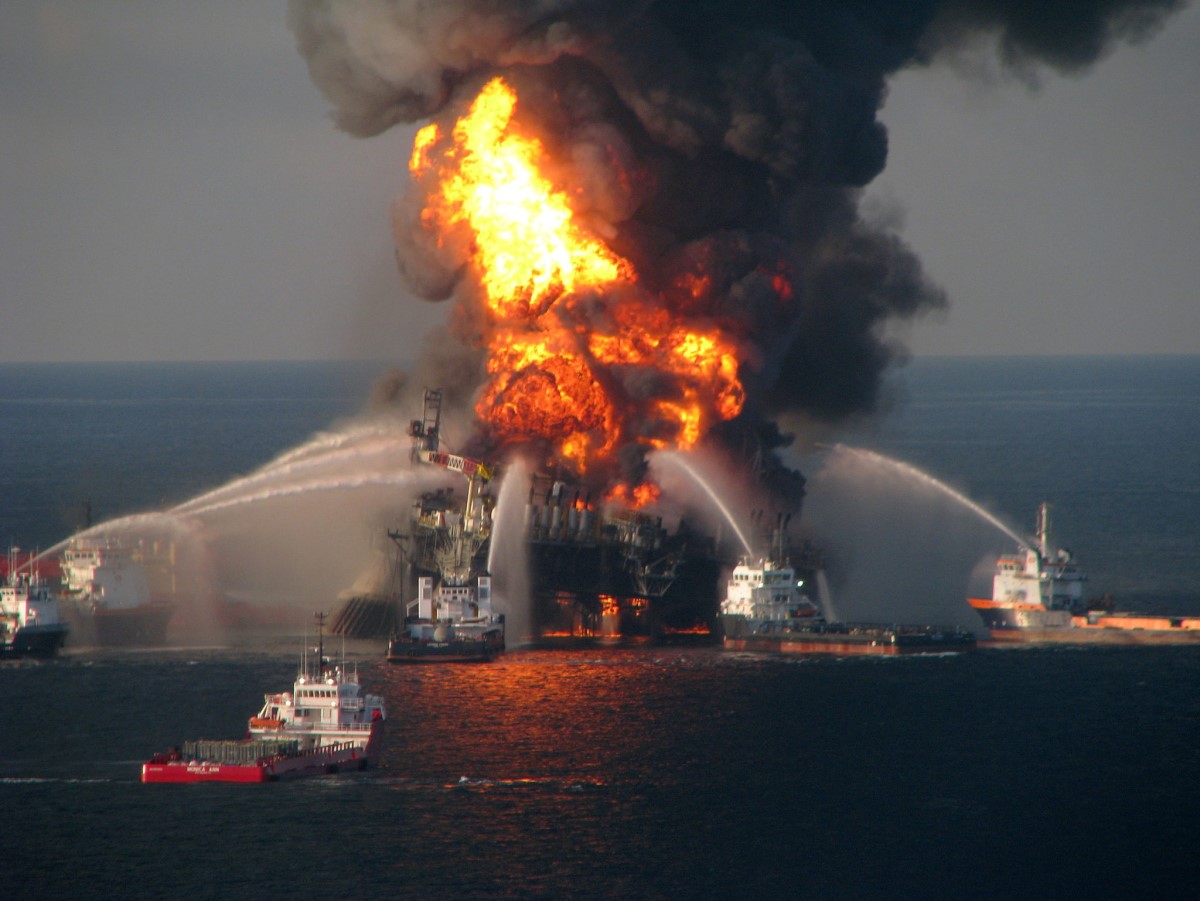A Decade After BP Oil Spill, Texas A&M Experts Say It Could Happen Again
Oceanography professors say the Deepwater Horizon spill in 2010 changed the Gulf of Mexico in ways we are still trying to understand.
Apr 15, 2020

On April 20, 2010, BP’s Deepwater Horizon well exploded in the Gulf of Mexico, killing 11 workers and resulting in the worst oil spill in history. About 168 million gallons of oil spilled into the gulf before the well was sealed months later.
As the 10th anniversary of the spill approaches, a team of Texas A&M University scientists who conducted various research projects during and after the spill believe that such an event could happen again.
Oceanography professors Piers Chapman and Steve DiMarco at Texas A&M and Antonietta Quigg at Texas A&M-Galveston said the spill was in a class of its own compared to previous oil spills.
“It is still hard to comprehend that many people lost their lives immediately at the time of the spill and hundreds of thousands of people had their lives disrupted and their businesses and livelihoods displaced,” DiMarco said. “One thing we learned much about is the resiliency of the Gulf of Mexico ecosystem and coastal communities. We also learned that although there was damage to the environment, there were many natural processes, such as ocean currents, wind and naturally occurring marine microbial life that were in place that helped to prevent the damage from being much worse.”
NASA satellite images of the spill later confirmed that it was much larger than originally believed – about 68,000 square miles, about the size of the state of Oklahoma.
Chapman, who led a $14 million project with DiMarco and others from Texas A&M, said the Deepwater Horizon spill caused major damage to fauna in the Gulf of Mexico, including deep ocean coral reefs that grow very slowly.
“We now know a lot more about the biology of the deep Gulf of Mexico than we did before,” Chapman said. “There was also a lot of research on the use of dispersants that has led to some major arguments in the scientific community.” Some studies showed that dispersants used in the clean-up process were far more harmful to marine life than the actual spill itself.
“One really interesting fact was that despite huge amounts of methane gas released with the oil, much of it never made it to the surface but was consumed by natural bacterial population,” he said. “Since the Gulf has thousands of natural oil and gas seeps, these bacteria see any such release as a food source, although they do not act on a scale as fast as we would like it to be.”
Quigg, who received grants totaling $10 million from the Gulf of Mexico Research Initiative – part of a $500 million fund BP established to support research – to study the impacts of the oil spill, said various stakeholders worked together that had never before, and much has been learned from the event, such as how oil behaves in the environment and how the environment itself can also work toward eliminating much of the oil, she said.
“We now know much more about how these two factors determine the fate and transport of the oil in the ocean,” Quigg said. “We also now have a deeper understanding of the role of dispersants. This is all good information which can be applied to the next spill.”
All agree that the long-term effects of the spill are still being determined. For example, a 2013 study showed that dolphins and other marine life were dying at six times the normal rate in the area affected by the spill.
“There is no account of how much marine life was lost or will be lost,” Quigg said. “The ability to produce offspring or new growth is part of this loss, but we still do not have a good way to assess what this will be for the gulf.”
All of the experts agree that another such spill is a virtual certainty. One reason: more than 2,000 deep-sea wells have been drilled in the gulf in the last 25 years.
“I hate to be pessimistic, but I suspect that there will be a similar spill at some point, although not necessarily in the gulf,” Chapman said. “It will be just as messy, although the industry will come together again to solve the engineering problems that result.”
To date, BP has spent more than $50 billion in fines, damages and clean-up costs related to the spill.
DiMarco said he is concerned that in the past 10 years since the spill, there are still no detailed steps of what to do if another event occurs.
“There is still no plan for a sustained and integrated ocean observatory to provide real-time observations of the full water column – from surface to ocean bottom,” DiMarco said . “An analogy would be if you were trying to make hurricane predictions for the entire East Coast but you’re using just one atmospheric pressure record from Miami, Florida.”
Quigg called the spill was a life-changing event for many, including herself.
“There is now a community that has developed a common language and set of skills which can spring into action and respond much more quickly than prior to the incident,” she said.
“I have been fortunate to be able to examine the environmental effects of the spill, and to be part of an amazing community of scholars through our Gulf of Mexico Research Initiative,” Quigg said. “In this way, the spill will have a lasting impression on me. I have had the honor and privilege to work and interact with the most amazing array of people, from 16-year-old high school students wanting some hands-on experience during their summers to senior scientists into their 70’s. All of them have made a contribution.”
By Keith Randall, Texas A&M Marketing & Communications

